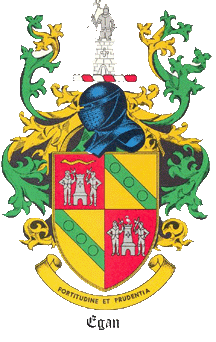
Generations or Time to Most
Recent Common Ancestor (TMRCA)
TMRCA
The most commonly used measure of difference between your DNA and that of someone else is how many markers (Alleles) are different. This is a simple count and does not take into account what can actually happen. In practice more than one marker can change in a generation and some markers change more rapidly than others.
It is possible to do a little mathematics to calculate how far back in time, in terms of the number of generations, two people may have a common ancestor. This is called the time to most recent common ancestor (TMRCA). To do this, we assume any number of markers, not just one, can change within one generation (Infinite Alleles), and we use the probability (mutation rate) that a specific marker will change.
The tool we were using to obtain TMRCA data was developed by the McGee Family. We have been performing a post analysis on the data to produce the representation below. The Y-Utility tool has been developed over time since our project started to track the changing data representations used by FTDNA. The Y-Utility now performs much more analysis than just TMRCA. We encourage you to explore the Y-Utility tool yourselves. A modified verion of McGee Y-Utility tool produces confidence intervals (5-95%) for TMRCA.
The Y-Utility options we have chosen are Infinite Alleles and the FTDNA mutation rate with the results as generations. If you are interested, you can read the paper by Bruce Walsh entitled Estimating the Time to the Most Recent Common Ancestor for the Y chromosome or Mitochondrial DNA for a Pair of Individuals.
Interpreting the Results
If you click on your FTDNA kit number in the
Index below you will see your entry and (hopefully) one or more other kit
numbers listed under it, each preceded by a number in { }. This number is
the number of generations back that you both may share a common ancestor with
a 50%, or flip of a coin, chance.
If you don't yet know where in Ireland you
came from look at the ancestors of those who are less than {20} away first to
see if that helps your search.
In practice {8} generations back is not all
that far and someone with a {3} generation tag may have in fact identical
markers and be as close as a sibling or child - this game is all about chance.
Tree Representation
Another way of representing the TMRCA
results is to build a "tree" which groups people who are likely to be
most closely related. This is not strictly a family tree but the distance you
have to go towards the root of the tree and then back up to any particular leaf
is a measure of closeness. Yes computer people draw trees upside down!
You will see that there are currently
several groups, or clusters, within the data. The possible reasons for which
have been discussed previously.
The leaves of the tree carry the kit number
and by examining the entry for any given kit number you can obtain an
approximate estimate of the geographic area in Ireland .
Current Tree
(pdf).
What to Do Next?
If you wish to email any participant, please
draft a note saying a little about your family and your reason for exploring a
potential or real family relationship (including your Kit Number and that of
the person you wish to contact) and send it to us. We will then
forward it to them with your contact details. This roundabout approach, as you
will appreciate, is to preserve privacy if participants so desire.
VERY IMPORTANT: If you have recently had success
in locating your oldest ancestors more precisely than say "Ireland"
or have more accurate dates please let us know and also, if possible,
update your FTDNA entry. We can do this for you if you wish or do not know
how.